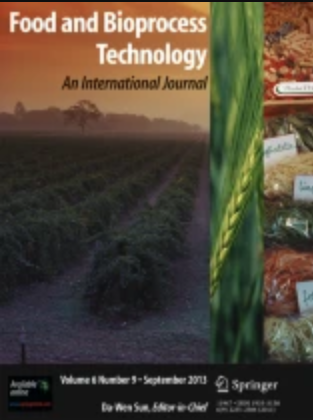Study on the Regulation of Lutein Release and Bioaccessibility by 3D Printing Interval Multi-layer Structure of Lutein Emulsion Gel
Abstract
In this study, four types of lutein emulsion gel with different interval multi-layer structures were prepared through 3D printing technology with double nozzles. The lutein release curves and the release kinetics revealed that the design of different interval multi-layer structures achieved the time-lagged release of lutein and changed its release mechanism. The kinetic changes of lutein bioaccessibility indicated that the time-lagged release of lutein leaded to the slow micellization of lutein, and improved its bioaccessibility. The release behavior of lutein was significantly correlated with its bioaccessibility. Further analysis of the FFAs release indicated that the release rate and final release degree of FFAs of the samples with lutein time-lagged release were high. Furthermore, the kinetics analysis of micellar fraction revealed that high concentrations of fatty acids, especially unsaturated fatty acids, could be found in the lutein time-lagged release samples. And the micellization rate of fatty acids had a similar trend to lutein. In addition, the particle size distribution of the mixed micellar phase suggested that the high concentration of fatty acid reduced the particle size, which enhanced lutein bioaccessibility. Overall, the regulation of lutein release characteristic through a 3D printing system with different interval multi-layer structures could enhance its bioaccessibility, which will provide new ideas for design delivery systems.

 求助内容:
求助内容: 应助结果提醒方式:
应助结果提醒方式:


